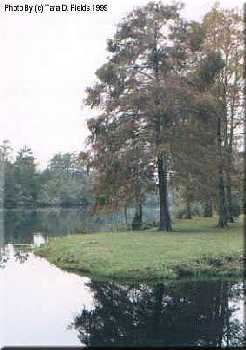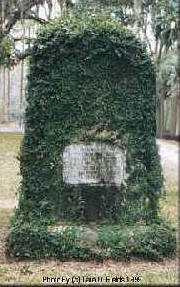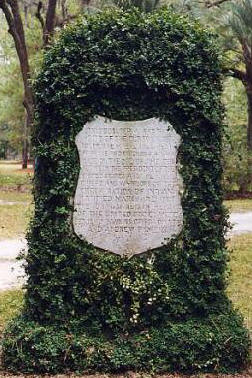| Coleraine (unincorporated county)
 On
14 November 1998 the Guale Historical Society went on a "ramble" to On
14 November 1998 the Guale Historical Society went on a "ramble" to
 the
original site of Coleraine in the far south west corner of Camden County,
Georgia. These pictures are from my [Tara Fields] trip with them. This is part of the only
original stretch of Coleraine Road left. Originally an Indian trail through
the woods, this part of it now runs past the house at Coleraine. the
original site of Coleraine in the far south west corner of Camden County,
Georgia. These pictures are from my [Tara Fields] trip with them. This is part of the only
original stretch of Coleraine Road left. Originally an Indian trail through
the woods, this part of it now runs past the house at Coleraine.
Front and rear views of the marker at Coleraine. Coleraine was once a
small Indian village, later a small white trading post. On 1 December 1786, the
State of Georgia deeded 2000 acres of this land to James Seagrove and 2,300
acres to James Armstrong.
Intrusion by white people caused problems with the Indians living there. On
29 June 1796, a historic treaty was signed between the Creek Indians and
the United States. Dignitaries from both sides, among them Benjamin
Hawkins,
Andrew Pickens, 20 Indian Kings, 75 chiefs, and 340 warriors, attended the
treaty signing.
 Despite the bickering going on on both sides, an agreement was reached
and amazingly it did not involve the Indians losing their land - much to the
displeasure of some Georgians in attendance. Eventually the Indians moved
out of the area on their own to search for greener pastures in other places
such as Florida. While the treaty may have been signed nearby at the old
Indian village of Muskogee, on 30 April 1912 the Lyman Hall Chapter of the
Daughters of the American Revolution, Waycross, Georgia, erected a marker at Coleraine in honor of the treaty started here.
Sam Tate of Tate, Georgia
donated this marker. Despite the bickering going on on both sides, an agreement was reached
and amazingly it did not involve the Indians losing their land - much to the
displeasure of some Georgians in attendance. Eventually the Indians moved
out of the area on their own to search for greener pastures in other places
such as Florida. While the treaty may have been signed nearby at the old
Indian village of Muskogee, on 30 April 1912 the Lyman Hall Chapter of the
Daughters of the American Revolution, Waycross, Georgia, erected a marker at Coleraine in honor of the treaty started here.
Sam Tate of Tate, Georgia
donated this marker.
The
inscription on the front of the stone reads: "This boulder marks the site of
the old Town of Coleraine, where the treaty of peace and friendship was made
on the 29th of June, 1796, between the President of the United States and
the kings, chiefs, and warriors of the Creek Nation of Indians. Ratified
March 18, 1797. The commissioners on the part of the United States were
Benjamin Hawkins, George Clymer, and Andrew
Pickens."
On the back: "Erected April 30, 1912, Lyman Hall Chapter of the Daughters
of the American Revolution, Waycross, Georgia; donated by Sam Tate, Tate,
Ga."
The cypress house was built and originally occupied by the
Hebbard Family
of the Hebbard Cypress Company - the same company that once owned and logged
the Okefenokee Swamp. The house was built in the late 1920's or the early
1930's. The lasting beauty of this wood made cypress a much sought-after
lumber. Luckily, the majority of what's left in the swamp is now on
protected land.
What a "backyard!" Off in the distance, facing the St. Marys River with
Florida just on the other side, I can see my boys getting further ahead. I
had better catch up! |